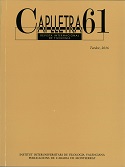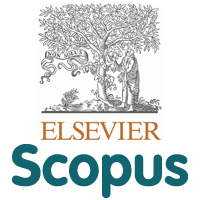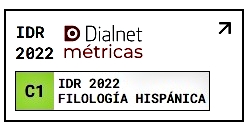Syncretism and morphological change: evolution of the verbal ending -AT in catalan
DOI:
https://doi.org/10.7203/caplletra.60.8453Keywords:
syncretism, linguistic change, Natural Morphology, verbal inflection, Old Catalan, Northwestern Catalan Abstract
Abstract
Abstract: The Latin verbal ending -at, found in etymons of forms of the 3rd person present indicative (1st conjugation), present subjunctive (2nd and 3rd conjugations), imperfect indicative and conditional (all conjugations), has generally become -a (cantat > canta) in Catalan. However, variant -e, now found in Northwestern Catalan and in Northern Valencian, is already documented in the first written evidence from the old counties of Urgell and Pallars (11th century). This divergence has received a phonological explanation, based on the assumption that in early Western Catalan final -t would have been lost late, which would have allowed the closure of the posttonic a (-at > -et > -e). Basing our argument on the principles of Natural Morphology, an alternative hypothesis is put forward in this paper, i.e. the emergence and expansion of variant -e can be attributed to morphological factors such as the rejection of syncretism. The data collected from CICA (Computerised Corpus of Old Catalan) seem consistent with this hypothesis, although the paucity of early texts advises us to be cautious in our conclusions. Key words: syncretism, linguistic change, Natural Morphology, verbal inflection, Old Catalan, Northwestern Catalan.
 Downloads
Downloads
Downloads
Published
How to Cite
-
Abstract1197
-
PDF (Català)526
Issue
Section
License
Authors submitting work to Caplletra for publication must be the legitimate holder of the usage rights. Legitimacy for the purposes of publishing the work must also include images, tables, diagrams and any other materials that may complement the text, whether they are the author of such material or not.
Copyright: on publishing their work in the journal, the author grants Caplletra. Revista Internacional de Filologia usage rights (reproduction, distribution and public communication) for both the paper printed version and for the electronic version.
All work published in Caplletra is covered by the Creative Commons license type Attribution-NonCommercial-NoDerivatives 4.0 (CC BY-NC-ND 4.0).
RESPONSABILITY
Caplletra. Revista Internacional de Filologia does not necessarily identify with the points of view expressed in the papers it publishes.
Caplletra. Revista Internacional de Filologia accepts no responsibility whatsoever for any eventual infringement of intellectual property rights on the part of authors.






